Showing top 0 results 0 results found
Showing top 0 results 0 results found

Launching your own product is difficult. What’s even harder is making sure it is continuously able to attract and retain new customers. In today’s post, I’d like to write more about how to measure your product’s growth to make sure it’s on the right track.
There are at least a few ways to approach business analytics, but I will focus on just one framework for now: the AARRR metrics.
But before we will dive in too deep, let’s start with the basics.
The AARRR framework was born in 1992.
Since then it’s helped numerous companies (including Autopilot, Piktochart, and Mixpanel) grow and stay successful over time. The framework is still considered one of the best business tools out there. It's also a good starting point if you’d like to kick off your business growth.
So, what does AARRR actually stand for?
In short, the AARRR metrics (also known just as Pirate Metrics due to the acronym’s resemblance to every sea rover’s favorite phrase) consist of:
- Acquisition
- Activation
- Retention
- Referral
- Revenue
These can - of course - be seen as different stages of the same funnel, so here’s what it would look like in a visual form:
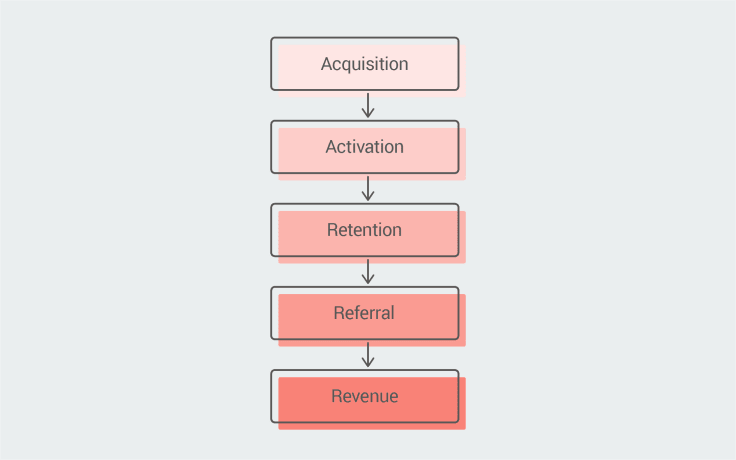
Each of these can be tracked to see how well your startup is doing and how stable its growth is in the long run.
Now, let’s go through each of these metrics in more details.
I will be dropping tips and tricks from my professional experience here and there. I will also show you what worked (and what didn’t) for top companies. Lastly, I will share advice I’ve been able to collect from business growth experts.
Acquisition: how are you getting new users?
According to Dave McClure (who created the AARRR framework), the acquisition is all about where you are getting your users from.
How can you check your user acquisition channels?
There are at least 19 different channels that you can spy on. Don’t forget that there might also be different ones specific to your business or industry and that some of the channels may be easier to track than others, including word of mouth.
One of the easiest ways to check where are you getting your users from and what are your most effective user acquisition channels is dissecting it in Google Analytics.
Go to your dashboard and choose ‘Acquisition’ on the left side:
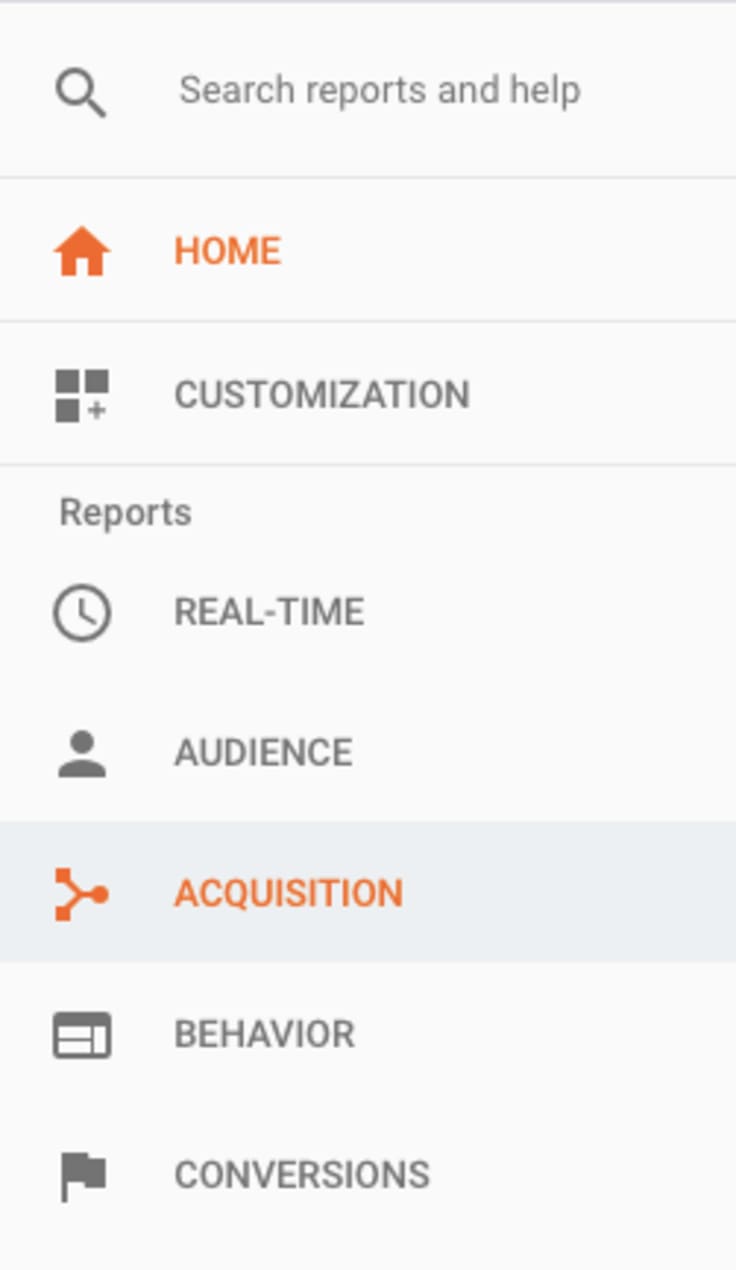
Go to ‘All traffic’ > ‘Source/medium’ to check how well are your different acquisition channels performing:
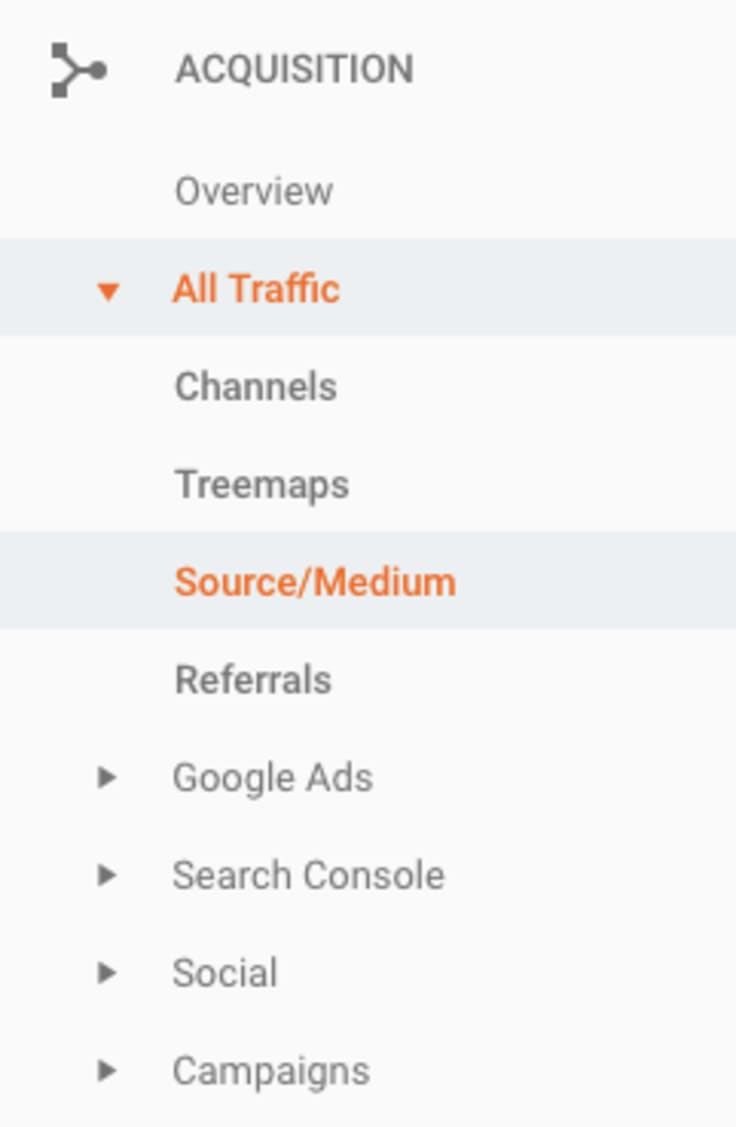
You’ll be then able to see a list of sources for your website traffic.
Few things to remember when looking at these channels are:
- Which of these channels are bringing you most conversions?
- Which ones have the most significant conversion ratio (visits/conversions)?
- Which are high-cost and which are low-cost?
- What are your core channels - which ideally means low-cost and high conversion rate - that you should be zeroing in on?
You can also check this excellent post by Brian Balfour that will quickly help you establish which acquisition channels you should laser-focus on.
Pardeep Kullar, UpscopeI’d say there are a couple of things about user acquisition that early startup companies don’t always understand and that we’ve learned with experience.
- All user acquisition channels take longer to set up and successfully get going than expected as there's a lot to learn when doing content or emails correctly. Integrations with partners and partnerships take more work and more time than expected.
- Often, one or two channels are doing most of the work in bringing in users, e.g. content and integrations marketing, and it's worth doubling down on those rather than trying to do everything.{{< /block/quote >}}
Once you’ve got these down, it’s time to start thinking about how you can accelerate user acquisition coming through your channels. This will help you reach more users in the long run. What processes could you use to start scaling these core channels?
Why is it ‘core channels’ and not a ‘core channel’?
Simply due to the fact that by focusing on one channel only, you would be at risk of a severe decrease or losing all of your traffic in case of any changes (even the small ones) to this particular channel.
One of the most important thing that can make your SaaS company fail-proof once you’ll start scaling it is user acquisition strategy.
Here’s what Ai Ching Goh, a CEO and co-founder at Piktochart says about it:
Internally, we debate often about increasing the top of the funnel or acquiring a very targeted segment of customers, which is lower in quantity but higher in quality. There is no right or wrong, but the important thing for a scaling startup is to have an alignment of what acquisition means between the marketing and product teams and the approach on how they are tackling it. When it comes to getting the user acquisition right, founders need to have an understanding of who they are acquiring, plus a team that focuses on moving the needle. What we've seen work at Piktochart is a dashboard, that works like a sum of how the different marketing activities contribute towards the goals of the month/quarter.
Ai Ching Goh, Piktochart
Ok, now to some examples.
When Jason Baptiste built his Wordpress plugin, PadPressed, he realized early on that one of the channels that brought his most users is press mentions. He then focused on getting journalists to write about his product.
Here’s the message he's shared with the team at TechCrunch:
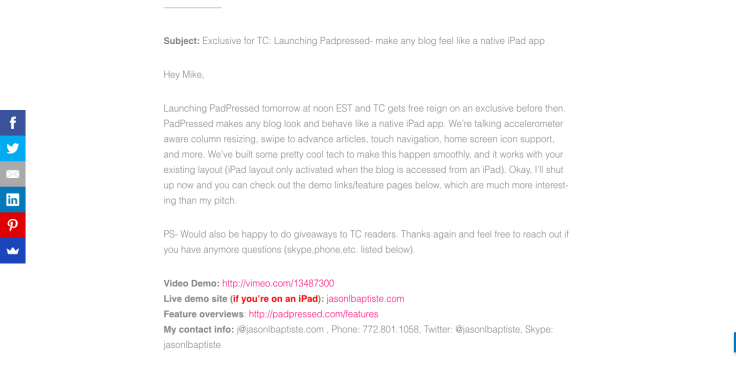
If you’d like to know exactly how he got the press to write about his product, you can check his post detailing the whole process.
The lesson here is: make sure that you know your core acquisition channels and learn how to get them right as well as how to scale the number of new user registrations coming from these.
Extra tip: You know what else can skyrocket your SaaS product growth? Partnerships. As always, I highly recommend checking our Solution Partner Program where you can connect with thousands of other entrepreneurs and create a stream of passive income for your business. You can read more about it in this post on why partner marketing can be great for your business growth.
Grow with us
Find new revenue streams for your business.
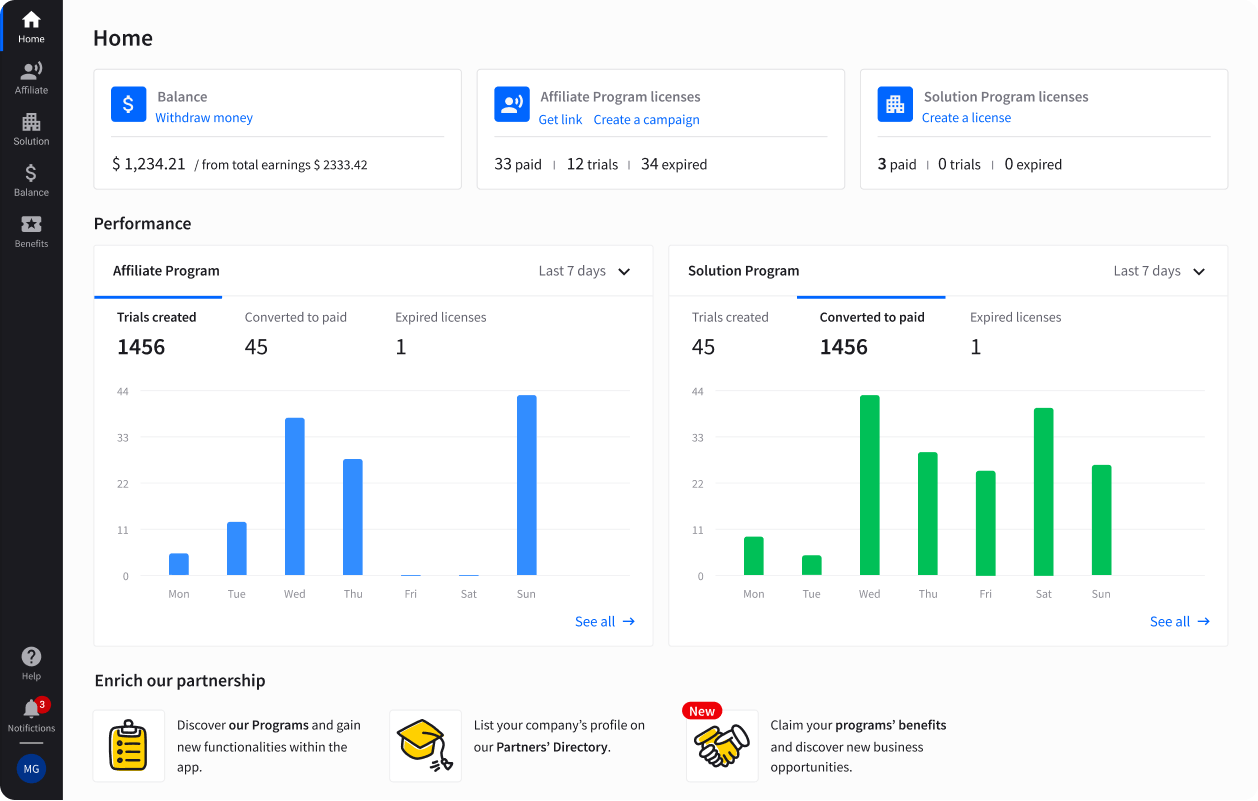
Activation: what makes the users understand your product?
Here’s the part that comes after gaining new users: activation. This is the process of helping your users understanding your product.
Why is it important? Because this is exactly the moment when you can influence all of the later stages, including retention, referral, and revenue as well as make your customers fall in love with the product you’ve created.
Jonathan Kim, AppcuesI’d say the thing that’s most overlooked is the impact on activation for a business. Because it is so far up a funnel, a modest increase in activation will actually have a bigger impact on the bottom line than any of the “R” metrics. It also heavily influences customer satisfaction and retention, so it’s surprising that most people overlook or underestimate the importance of this metric.
The key to improving activation is having a clear definition of your activation event. What gets measured gets managed, so having a clear and provable understanding of the point at which users see the value in your product will make it hard to fail. The teams that do this well are those who are able to take their "proud employee" hat off and see things from the customer's perspective.{{< /block/quote >}}
How can customer activation be nurtured and increased?
Once again, this can be done in at least a few ways.
One of them is email onboarding. If you’d like to get this technique right, I highly recommend these onboarding teardowns written by Val Geiser where she goes over the onboarding emails sent by various companies.
Another method of increasing the chance of your users becoming active is in-app onboarding. There are endless guides on how to structure your onboarding, but the ones that I keep coming back to are Samuel Hulick’s UserOnboard.com presentations.
Here’s his recent one where he analyzed how Wordpress activates new users to engage with their platform:
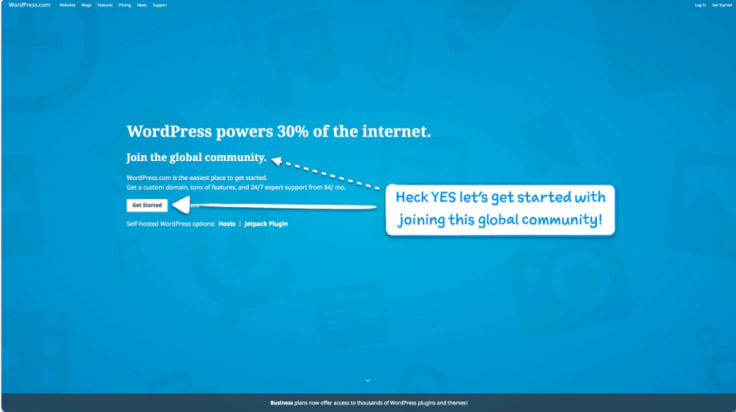
You can see the full version of ‘How Wordpress Onboards New Users’ on his website.
What’s crucial in getting both of these onboarding paths right is knowing who your users are, and identifying actions that turn a new user into an active one. Once again, user analytics tools such as Mixpanel and Amplitude will be of great help there.
Extra tip: Identifying places and moments where your users may get stuck in their journey is important too. What are the bottlenecks blocking them from moving from one stage to another? From my experience, these can be solved by setting up event tracking in your product that will help you see how your users are moving through it.
Also helpful in discovering and clearing up the pain points are customer interviews. You can, of course, conduct these through online apps like Skype or Zoom, but in-person interviews where you’ll have a chance to observe the customers’ actions is what will help your product engagement to another level.
Retention: why are your users coming back?
If your product is not great, even the most extensive marketing, high acquisition, and activation efforts will not make it immune to losing the customers. This is why you need to focus on the next stage of your funnel: Retention.
How to check user retention for your website or product in Google Analytics?
There at least a few ways to check user retention in Google Analytics, but I'd like to focus on the one I've found more useful in my day-to-day marketing activities.
It's called 'Cohort Analysis' and you can find it in the left side navigation:
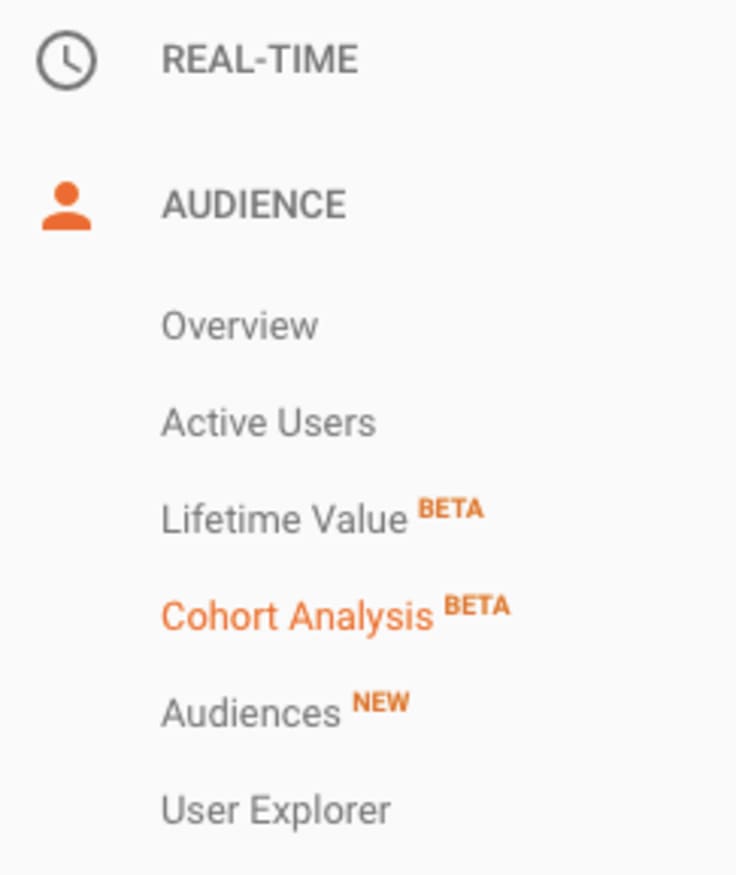
Ideally you'd want to make the retention curve look like a hockey stick, but the truth is it will get pretty flat especially when you're starting out as a product marketer:
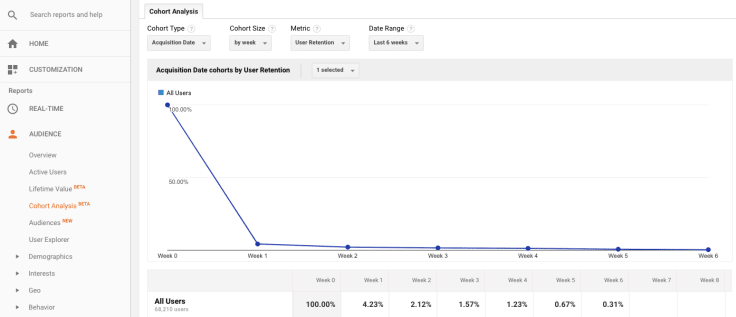
What are the best ways of encouraging your users to come back to your product? Let’s take a look at the survey results from TARP Worldwide.

source(https://www.helpscout.net/blog/customer-retention-strategies-that-work/)
As you can see, proactively helping your users get most of your product work wonders for their retention, followed by excellent customer support and keeping them up-to-date about new features.
Once again, here’s where you should use all methods that there are available to you to make sure that your users will have a great experience using your product. This can also be ensured through, i.e. tweaking your pricing, delighting your customers with some product swag such socks and T-shirts, and retargeting campaigns that will help you upsell products or services.
The one technique I’ve found most helpful for the startups I’ve been working with is great customer service mentioned above.
Making sure that your users' questions and issues are responded to and resolved as soon as possible is essential. Timely and genuinely helpful user support is definitely a make-or-break for your business.
At LiveChat, we - naturally - value the power of a great customer support a lot and that’s what makes our company stand out from the crowd. Our Support Heroes (as we call them) are responding to our customers’ questions 24/7, and they indeed go the extra mile to help our users.
What are other ways of making sure that your users are retaining? Email marketing campaigns focused on bringing the users back to the product also work perfectly well, especially if they are highly personalized.
Here’s what my colleague, Olga said about how making LiveChat’s communications more personal helped increase customer retention:
Olga Rogacka, LiveChatLong time ago, at LiveChat, a part of our past we would like to forget, we were sending blog emails with notifications about a new blog post. We didn’t personalize it much. I mean not at all.
The email was sent from a general company address (a sender was called “LiveChat Blog”), and once a subscriber opened it, they saw an excerpt of a blog post. There was no introduction, no personalization to a customer. This email was generated automatically after we published a blog post on our blog and we didn’t have any impact on it.
Once we realized the key to success in communicating with customers is personalization, we changed the whole system. We started to send emails from our own addresses. Now, our customers get emails from Olga, Justyna, and Kuba. And the content inside is pretty unique. It quickly explains what you will find in a blog post.
In our case, we noticed an increase in click rates of almost 100%. I guess people feel more curious and comfortable when they get emails from a particular person, not a company.{{< /block/quote >}}
And yes, we still do stick to this approach. Just take a look at the Content team for our main LiveChat blog has sent to their subscribers back in January this year:
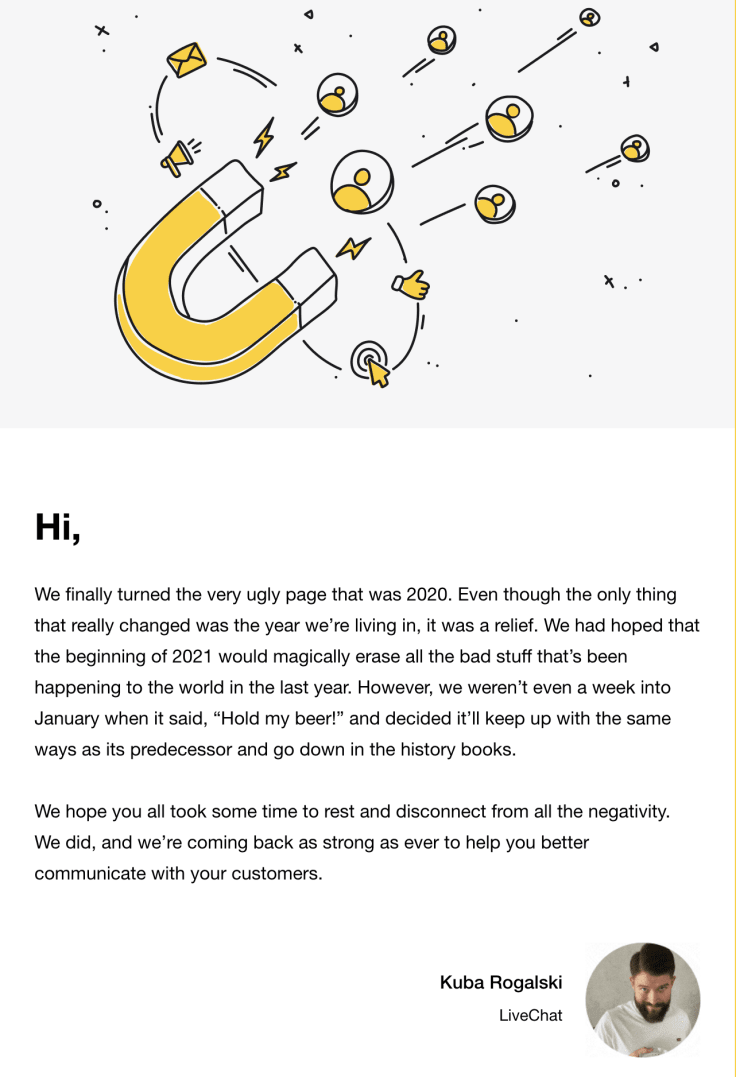
That’s way better, right?
When it comes to retention, take extra care when looking at the metrics and defining potential roadblocks that could be stopping your users from signing up or swapping a free version of your product for a paid one. Once more, tools such as Google Analytics, Amplitude, or Mixpanel will be helpful for checking the conversion rates of your core user actions.
The most overlooked thing about retention from my point of view would be the communication with already activated users. Unfortunately - in average - only small part of activated users comes back to your product, therefore you, as a product owner, have to do everything you can to make them feel appreciated, well informed and not confused with your offering. Hence with adequately crafted emails (or any other form of messaging), you can effectively trigger them to come back. The most challenging part here is to find the right balance between being too spammy and underutilizing the potential. Always a/b test, experiment a lot, analyze your data and talk to your users a lot! It’s quite improbable to get the retention right from the beginning, but with proper testing and improving your metrics with small steps, you can increase it significantly. Believe me – it’s very satisfying! :)
Adam Wesołowski, Ladder
Referral: are users recommending your product to others?
Once you have the acquisition, activation, and the retention parts right, getting referrals should be a walk in the park, no?
Unfortunately, nailing this element of the AARRR framework is not always as easy as it seems like at first. Referral is all about turning your active users into brand ambassadors who will be inviting others to use your product.
How to make it happen? First of all, encourage them to do so. Make sure that you include at least one invitation loop in your product. It could be as easy as suggesting sending invites to their coworkers during the onboarding process. You could also create a referral program where users can get rewarded for their engagement..
Once you have your invitations program up and running, and the referrals are coming in, why not take a step further and create a partner program. That’s what we did at LiveChat a few years ago.
We set up two partnership models where users can either promote as affiliates or recommend our product to others as a part of their business suite as Solution Partners. You can check the details of both of these partnership models on our website.
Revenue: are users turning into paid customers?
Marketing experts can’t agree if the revenue stage should come before or after the referral one, but creating revenue for your business is undoubtedly one of the core elements you should focus on when developing a project. This phase is all about making sure that what you do online turn into a real-life stream of income.
David Watson, FathomFrom my experience one of the biggest challenges when driving revenue growth, is seeking to achieve this goal solely by focusing on acquiring new customers. While this is a worthy pursuit, this focus often comes at the expense of ignoring other revenue and profitability levers. Opportunities to grow revenues from existing customers (expansion revenue) and efforts to improve customer retention, may lack the focus they deserve.
Firstly, pick your niche; and ensure all sales and marketing efforts are directed towards “good-fit” customers. Then focus on delighting these customers with a great product and excellent customer service/support. Favourable revenue growth will likely follow.{{< /block/quote >}}
What’s important, it does not have to mean that you introduce a paid plan only policy at your SaaS startup. There are at least a few approaches you can take to generate more revenue:
- A freemium plan: it includes making a core product available free of charge for most users, you pay for extra features as you go or choose a paid plan with additional features included;
- Ads: this one is pretty self-explanatory, but just to recap: allowing others to promote their services and projects in your product can seriously boost your revenue, but it is definitely not something that will work for everyone;
- Paid plans: I’ve mentioned these before, but I’m listing them again to differentiate this approach from the freemium model.
No matter what take you decide on when it comes to creating revenue, make sure that you measure different income sources to find out which ones are bringing you the most value (just like you did with acquisition channels).
How to check which pricing model will be right for your business?
One way to do it, especially if you’re starting out is to test out different models on your landing page. You will be then able to see which ones are increasing your acquisition. This is what Klipfolio did by A/B testing their pricing sites. It allowed them to leave this old pricing model behind:

They transitioned it to this offer that they further tweaked until it made sense to both their team and most of their prospects as well as existing customers:
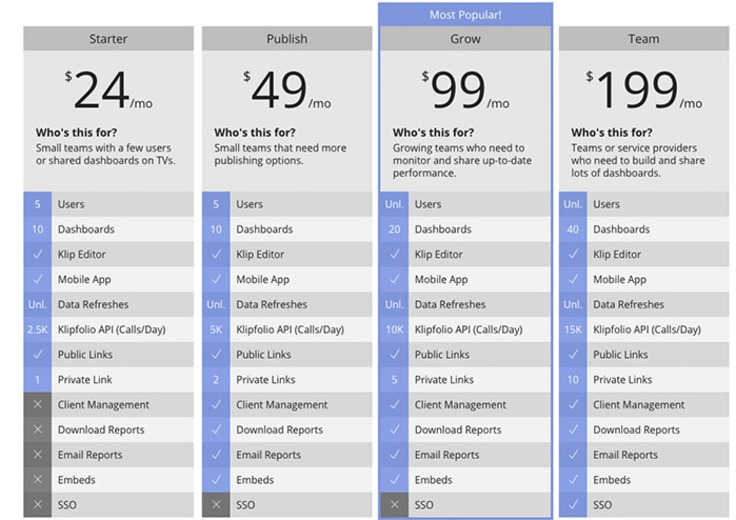
As you can see, segmentation is again the key to getting things right.
The other technique that would work would be to simply talk to your customers (yes, it wins every time!). Check which of the revenue strategies seems appealing to them. Get on the phone or connect with your users via Skype for tons of insightful feedback.
You can also check this great post on different SaaS pricing strategies from Upscope.
How to make AARRR metrics work for your SaaS product?
So, how to apply these metrics to improve your product journey?
- Identify which of your communication channels belong to which stage of the user journey (i.e. word of mouth may be great for acquiring new users, while retargeting ads will increase your retention metrics).
- Make sure that you're not only removing bottleneck at each stage of the funnel but also have an overview of how the it's performing as a whole and how smoothly are users moving through it.
- Personalization seems to be the key in succeeding in marketing and product efforts. Take an in-depth look at them and ask yourself which of the user touchpoints can be further personalized. It may include changing your website copy depending on the user acquisition channel. You can also send out highly individualized emails based on the action that a certain user has taken within your product.
Become our partner
Build your business on excellent customer service products

Over to you
Ok, so there you have it: the introduction to the AARRR framework, and how you can use them to grow your business.
I’d love to discuss these in the comments below. Does AARRR framework need rephrasing after 11 years since its launch? What other metrics would you add to the updated model?


